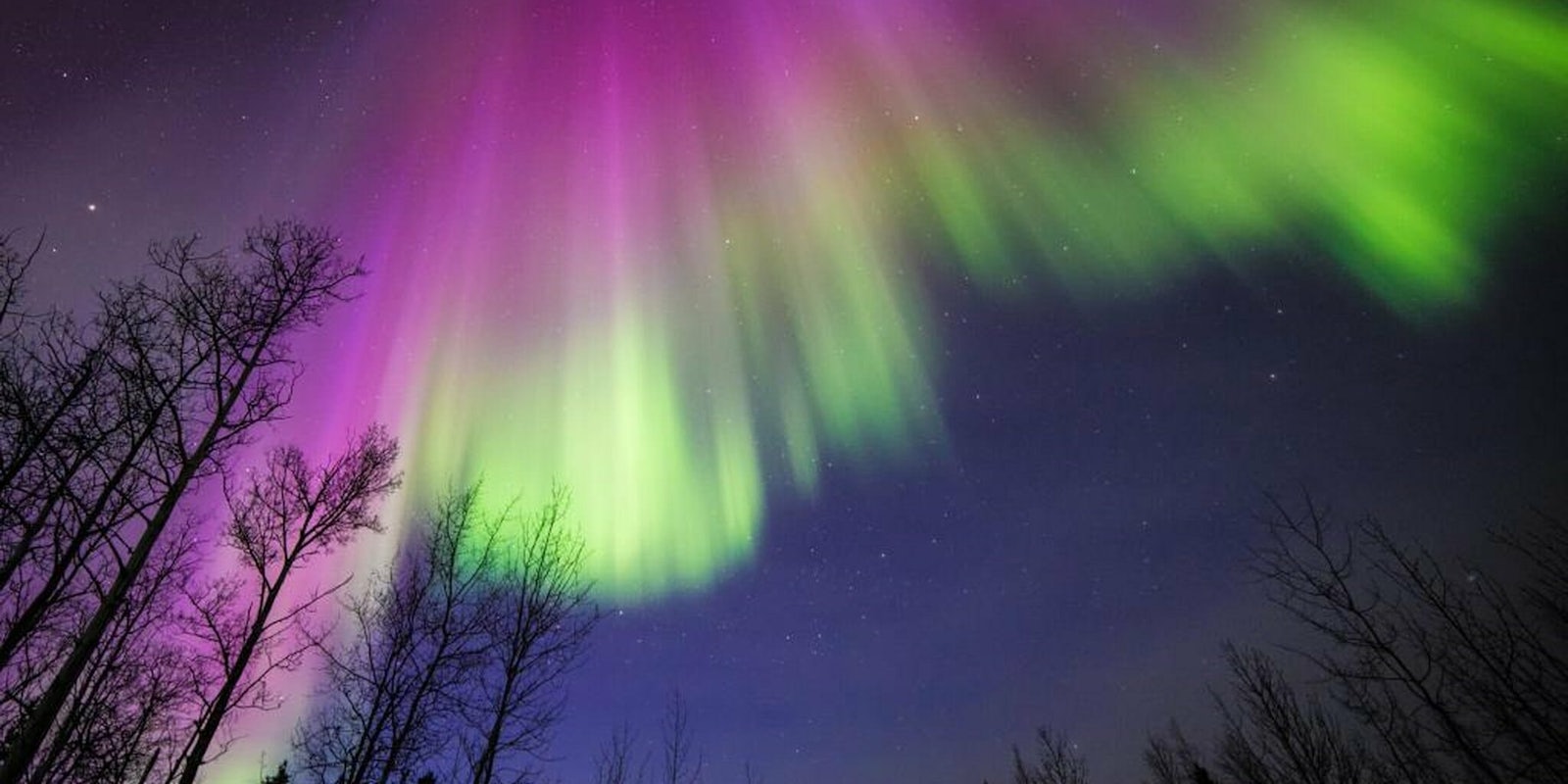A geomagnetic storm hit Earth on Wednesday night, resulting in an unusually mesmerizing display of the aurora borealis, or northern lights.
While the beautiful aurora typically occurs near the Earth’s north pole, people across the world were able to see it due to the geomagnetic storm causing a burst of high-speed solar wind.
What are the northern lights?
The aurora’s unusually high level of visibility is the result of a “coronal hole” in the sun that allows the solar winds to shoot directly toward Earth. Once these winds hit Earth’s magnetic field, they create geomagnetic storms.
These are visible in the form of auroras and can sometimes interfere with satellite equipment.
Peak of tonight’s storm level Aurora was 22:53. Scottish Borders nr Hawick. @VirtualAstro pic.twitter.com/qQQzGZt8Eq
— Sam Cornwell (@Samcornwell) October 7, 2015
What is the best time to see the northern lights?
According to the U.K. weather service, the Met Office, this period of visible aurora activity will last for several weeks.
“The season of the year has an influence,” the Met Office explained. “The science behind this is not fully understood, but the two equinoctial periods in spring and autumn tend to produce an increase in aurora compared with winter and summer.”
Where exactly are the northern lights?
The geomagnetic storm means that the aurora is visible far closer to the equator than usual, possibly as far South as Oregon, Pennsylvania, and Iowa.
If you live around that longitude and are far enough from a city to avoid light pollution, you have a pretty good chance of seeing the Northern lights some time in the next two weeks.
Other hot spots for the northern lights in the United States include:
- Michigan’s Upper Peninsula
- Northern Maine
- Fairbanks, Alaska
- Minnesota
Photo via NASA


